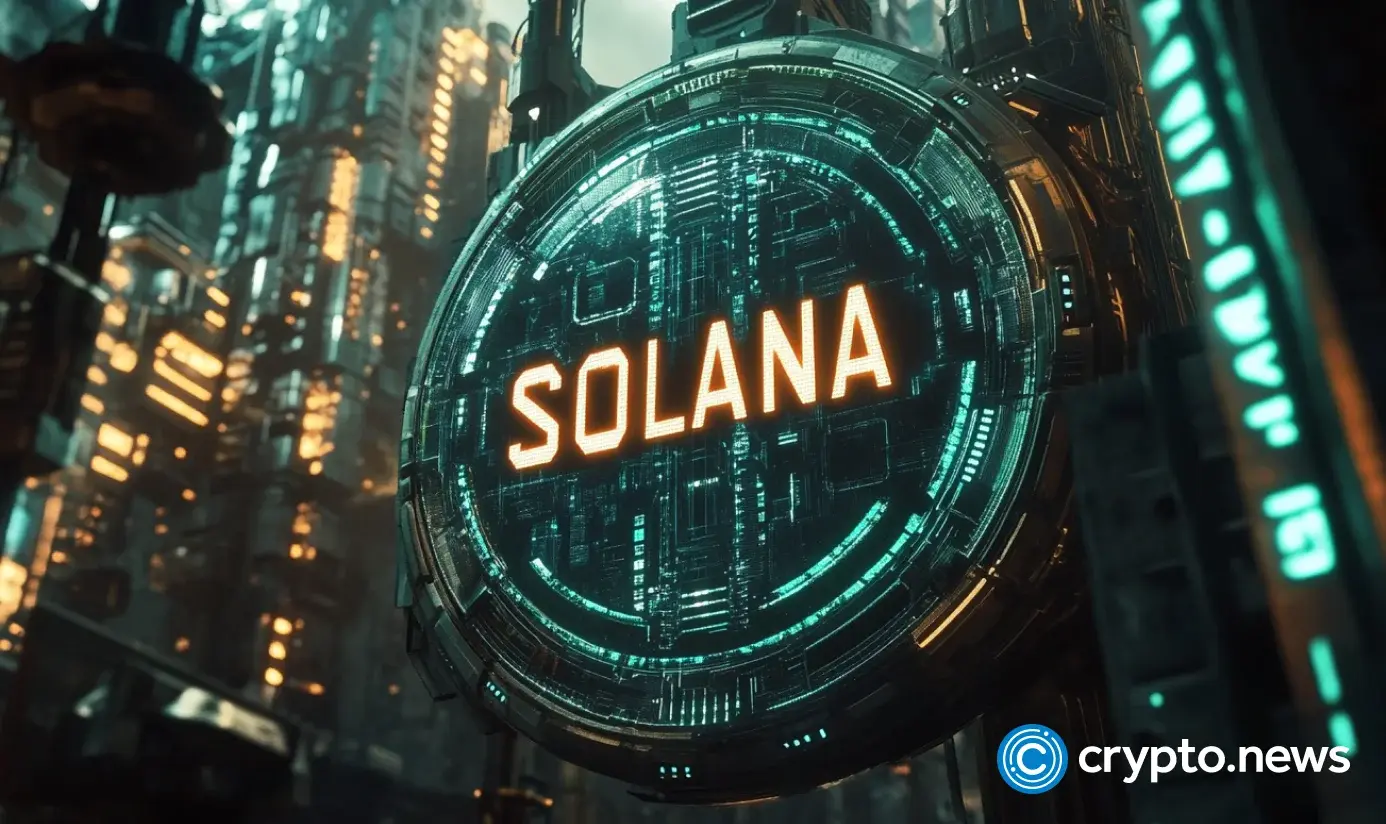- Robert's Newsletter
- Posts
- RFS DeFi Risk Intelligence Weekly
RFS DeFi Risk Intelligence Weekly
Institutional-Grade DeFi Risk Monitoring brought to you by RFS Consulting
Welcome to another edition of RFS DeFi Risk Intelligence Weekly!
— Powered by RFS Consulting | www.rfsconsultingglobal.com
Here’s whats new this week:
🗞️ Enjoying RFS DeFi Risk Intelligence Weekly? Learn How You Can Support Us!
“Independent DeFi risk research takes time and resources. If you enjoy our insights, consider fueling the work with a small contribution below”
☕️ Buy Me a Coffee — Fuel future newsletters!
💸 Tip in USDC: Ethereum 0x695B71a929A21F2A260f61aEd09872DA053Bcc42 — secured via Gnosis Safe
💳 Tip via Stripe — One-time or recurring support.
📰 Crypto News Highlights
Macro: All eyes on FOMC minutes and Jackson Hole Symposium (Aug 21–23). Macro sensitivity remains high.
Watch Fed Chair Jerome Powell’s Keynote Address at the Jackson Hole Symposium below:
Read more from the Federal Open Market Committee (FOMC) minutes below:
Market: BTC ~$113k, ETH ~$4.1k, but both saw significant ETF outflows—BTC: ~$523M, ETH: ~$422M.
Policy: GENIUS Act is now law; regulation tightening around stablecoins.
DeFi Risk: The BtcTurk exploit (~$48M) underscores concerns around hot-wallet and key-management protocols.
Tech: Solana’s Alpenglow vote in process; weekend testnet reached ~100k TPS—monitor upgrade and governance risk.
📸 Market Snapshot
Retreating toward $112–114k after recent highs; cautious sentiment ahead of Fed events |
Hovering around $4,050–4,150; liquidation activity persists near the $4k mark. |
Spot Flows: | BTC ETF outflows ~$523M/day; ETH ETF outflows ~$422M—watch for any reversal. |
Supply remains in the mid‑$200Bs; USDC ~ $67B |
🪙 Wyoming’s Frontier Stable Token (FRNT) — Breaking Ground
Overview: Wyoming has launched the Frontier Stable Token (FRNT)—the first fully-reserved, state-issued stablecoin in the U.S.—live on seven blockchains including Arbitrum, Avalanche, Base, Ethereum, Optimism, Polygon, and Solana (Global Government Fintech).
Backing & Structure: Pegged 1:1 to USD, FRNT is overcollateralized by 2% with U.S. dollars and short-duration Treasuries held in trust (Global Government Fintech).
Access & Adoption: Available soon via Kraken (Solana) and Rain Visa card (Avalanche); initial pilots include Avalanche-based real-time contractor payments, with broader public rollout in the coming days (Global Government Fintech).
Governance & Impact: Managed by the Wyoming Stable Token Commission using state budget (~$5.8M); some see it as a model for public-sector finance innovation, while others warn of regulatory complexity if more states follow suit (Global Government Fintech).
RFS Risk Implications:
Liquidity & On-ramp diversification: FRNT introduces a new government-grade stablecoin option—monitor for adoption trends affecting USDC and PYUSD flows.
Regulatory Precedent: State-level issuance adds complexity to stablecoin regulatory frameworks amid the GENIUS Act.
Interoperability & Reserve Security: Multi-chain deployment backed by short-duration treasuries adds a unique dimension to public financial infrastructure
📄 DeFi Protocol & Infrastructure Highlights
Solana (Alpenglow): Validators are voting to reduce finality time (proposal SIMD-0326); weekend tests hit ~107k TPS. Deep Dive Below:
The Solana "Alpenglow" vote refers to a proposal (SIMD-0326) that is being put to a vote by Solana's validators. The proposal, if approved, would represent a major overhaul of the core consensus protocol, replacing the existing Proof-of-History (PoH) and TowerBFT mechanisms.
Here's a breakdown of the key aspects of the Alpenglow proposal:
Faster Finality: The primary goal of Alpenglow is to dramatically reduce the time it takes for a transaction to be considered final. The current finality time is approximately 12.8 seconds, and Alpenglow aims to cut this down to as low as 100-150 milliseconds. This would bring Solana's performance much closer to that of traditional Web2 applications, enabling new use cases like high-frequency trading and real-time gaming.
New Consensus Architecture: Alpenglow introduces a new consensus protocol built around two core components:
Votor: This is a new voting protocol that replaces on-chain vote transactions. It operates by having validators exchange votes off-chain and use cryptographic proofs to attest to consensus. This eliminates the need for validators to pay transaction fees for voting, which has been a significant operational cost.
Rotor: This is an improved block propagation protocol designed to replace the current Turbine system. Rotor is expected to make data dissemination more efficient and reliable.
Validator Economics: The proposal also includes a significant change to validator economics. Since voting would move off-chain and no longer require transaction fees, Alpenglow introduces a Validator Admission Ticket (VAT), a fixed fee that validators would pay per epoch. This fee is designed to maintain an economic barrier to participation, similar to the costs validators currently incur through vote fees, and to offset inflation.
Improved Resilience: The new protocol is designed with a "20+20" resilience model, which means it can tolerate up to 20% of validators being adversarial (malicious) and another 20% being offline or unresponsive, without halting network progress.
Voting Process: The vote itself is a governance process carried out by Solana's validators. The proposal passes if the number of "Yes" votes is equal to or greater than two-thirds of the total "Yes" plus "No" votes. There is also a quorum threshold that must be met
Ethereum: Post-Pectra ecosystem continues growth. The expansion of middleware and AA features introduces new attack surfaces. Deep Dive Below:
The Ethereum ecosystem has undergone significant changes since the Pectra upgrade, which went live on May 7, 2025. Pectra combined the Prague execution layer and Electra consensus layer updates, implementing 11 Ethereum Improvement Proposals (EIPs) aimed at enhancing scalability, user experience, and validator efficiency.
Here's a breakdown of the post-Pectra ecosystem:
Scaling and Layer-2 Solutions
Expanded Blob Capacity: Pectra doubled the blob capacity per block, increasing the target from three to six blobs and the maximum from six to nine. This significantly expands Ethereum's data capacity for rollups, leading to lower transaction fees and increased throughput on layer-2 solutions like Arbitrum and Optimism. Everstake reports that blob usage increased by 21% after the upgrade.
Encouraging Blob Usage: EIP-7623 makes storing data directly on the Ethereum blockchain (calldata) more expensive, incentivizing developers to utilize blobs, which are a more efficient and cost-effective alternative for Layer-2s.
Future Scaling: Pectra lays the groundwork for further scalability improvements like PeerDAS (Peer Data Availability Sampling) and Verkle trees, designed to make data handling more efficient and reduce node storage requirements.
Validator and Staking improvements
Increased Validator Stake Limit: EIP-7251 raised the maximum effective balance for validators from 32 ETH to 2048 ETH. This allows large-scale stakers to consolidate their ETH into fewer validators, simplifying operations, reducing networking overhead, and enabling efficient reward auto-compounding.
Faster Activation and Withdrawals: EIP-6110 and EIP-7002 accelerate validator onboarding and simplify the exit process by allowing execution layer-triggered withdrawals. This streamlines staking and enhances flexibility for stakers.
Validator Consolidation: Early data suggests some validator consolidation is occurring, potentially leading to a slight increase in the average stake per validator.
User Experience Enhancements
Account Abstraction: EIP-7702 allows Externally Owned Accounts (EOAs) to temporarily behave like smart contracts, enabling features like gasless transactions, batched transactions, and custom authentication methods. Elementus reports that this is a significant step towards a more intuitive and user-friendly experience on Ethereum.
Developer Flexibility: Account abstraction also provides developers with greater flexibility in designing wallets and dApps, simplifying user interactions and opening doors for innovative applications.
Impact and Outlook
Lower Fees: The expansion of blob capacity and optimization of data handling have resulted in near-zero blob fees, significantly benefiting Layer-2 solutions and their users.
Improved Scalability and Efficiency: Pectra has improved Ethereum's scalability by increasing transaction capacity and streamlining validator operations.
Enhanced User Experience: Account abstraction has the potential to remove friction and make interacting with Ethereum easier and more accessible for a wider audience.
Continued Development: Ethereum's development continues beyond Pectra, with the next major upgrade, Fusaka, slated for November 2025. Fusaka will focus on further scalability enhancements and node resilience, potentially incorporating features like block-time reduction and Verkle trees.
In essence, the post-Pectra ecosystem reflects a more mature and efficient Ethereum network, better positioned to support the growing demand for decentralized applications and services through improved scalability, a more streamlined staking process, and a more user-friendly experience.
How A Small Crypto Investment Could Fund Your Retirement
Most people think you need thousands to profit from crypto.
But this free book exposes how even small investments could transform into life-changing wealth using 3 specific strategies.
As markets recover, this may be your last chance to get positioned before prices potentially soar to unprecedented levels.
📉 RFS Signals - Week of August 18, 2025
Signal | Status | Note |
|---|---|---|
Liquidity (Stablecoin Issuance) | Slightly Positive ➕ | FRNT launch may attract non-private demand; USDC momentum steady |
ETF Flows | Negative ➖ | Heavy BTC/ETH outflows need reversal confirmation |
Volatility (Macro) | Elevated 🔺 | Fed and Jackson Hole events cluster risk |
Protocol Risk | Rising 📈 | Solana voting dynamic, multi-chain issuances like FRNT introduce complexity |
🛰️ Opportunities & Positioning
Stablecoin yield strategies: FRNT’s backing narrative and interest-bearing reserves spotlight cash-on-chain and yield models.
Event-driven entries: Watch for ETF flow reversals or realized volatility drops post-Jackson Hole to add exposure.
Monitor FRNT ecosystem growth: Evaluate Solana/Avalanche infrastructure and wallet ecosystem around FRNT deployments.
Wait for tech stabilization: Hold entry into Solana ecosystem until “Alpenglow” vote & client diversity metrics firm up
🙇🏾♀️ Camryn’s Corner
Welcome to another segment of ‘Camryn’s Corner’ brought to you by your co-author and editor! Each week I will highlight my top 5 DeFi Applications, Protocols, or other news worthy subjects in the crypto and DeFi world. This week I will be highlighting the top altcoins in today’s crypto space.
For newcomers to the crypto space, an "altcoin" is simply any cryptocurrency other than Bitcoin. The term "alt" is short for "alternative," meaning these coins were created as alternatives to Bitcoin, often aiming to improve upon its technology or offer different use cases. While Bitcoin is primarily a store of value, altcoins have diverse functions, from powering decentralized applications (dApps) to enabling faster and cheaper transactions.
As of August 2025, three of the most talked-about altcoins are Ethereum (ETH), Solana (SOL), and Ripple (XRP).
Ethereum (ETH): Ethereum has seen a remarkable surge this month, with its price breaking past the $4,000 mark for the first time in months. This rally is largely attributed to a significant increase in institutional demand, including record inflows into new spot Ethereum exchange-traded funds (ETFs). Furthermore, the successful implementation of its Pectra upgrade and the continued growth of its Layer 2 solutions have made the network more scalable and attractive to a wider range of users and developers. |  By Coindesk.com |
Solana (SOL): Solana continues to gain momentum, with its fast transaction speeds and low fees attracting both retail investors and institutional interest. A key driver for its growth this month has been the speculation and progress toward a potential Solana ETF, which has fueled a surge in institutional accumulation of SOL. This, combined with its thriving ecosystem of decentralized applications (dApps), is positioning it as a major competitor to Ethereum. |  By Forbes.com |
Ripple (XRP): Ripple's native token, XRP, has rebounded sharply, with a renewed bullish sentiment driven by increasing regulatory clarity following the conclusion of its long-running lawsuit with the SEC. The company's expanding partnerships with global financial institutions for cross-border payments, along with the growing optimism for a spot XRP ETF, are making it a standout performer. This institutional traction and potential for broader adoption are key factors in its price appreciation. |  By U.Today |
🫱🏽🫲🏿 Support RFS Risk Intelligence Weekly
If you enjoy our weekly research and want to support continued independent risk analysis, consider:

Gif by xbox on Giphy
☕️ Buy Me a Coffee — Fuel future newsletters!
💸 Tip in USDC: Ethereum 0x695B71a929A21F2A260f61aEd09872DA053Bcc42 — secured via Gnosis Safe
💳 Tip via Stripe — One-time or recurring support.
📢 Call to Action
Now Accepting 3 Pilot Clients
We’re onboarding a limited number of DeFi protocols and institutional funds into our real-time risk scoring dashboard and DeFi compliance architecture.
💼 Custom engagements | Audit-aligned scoring | Institutional onboarding
📬 Subscribe | Partner | Access Institutional Tools
Gain access to:
Full RFS Heat Map & Protocol Risk Scores
Sharpe Ratio & Risk Index Modules
Institutional API Integration Options
👣 Follow us to Stay Updated
🌐 Website
Till next time,
RFS DeFi Risk Intelligence Weekly
🔓Disclaimer: This Weekly is strictly informational—not investment or legal advice. RFS Consulting emphasizes governance, model validation, and data integrity in its risk assessment framework.








